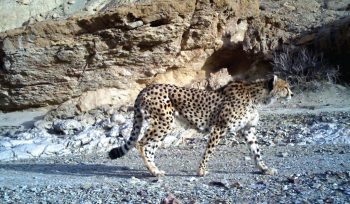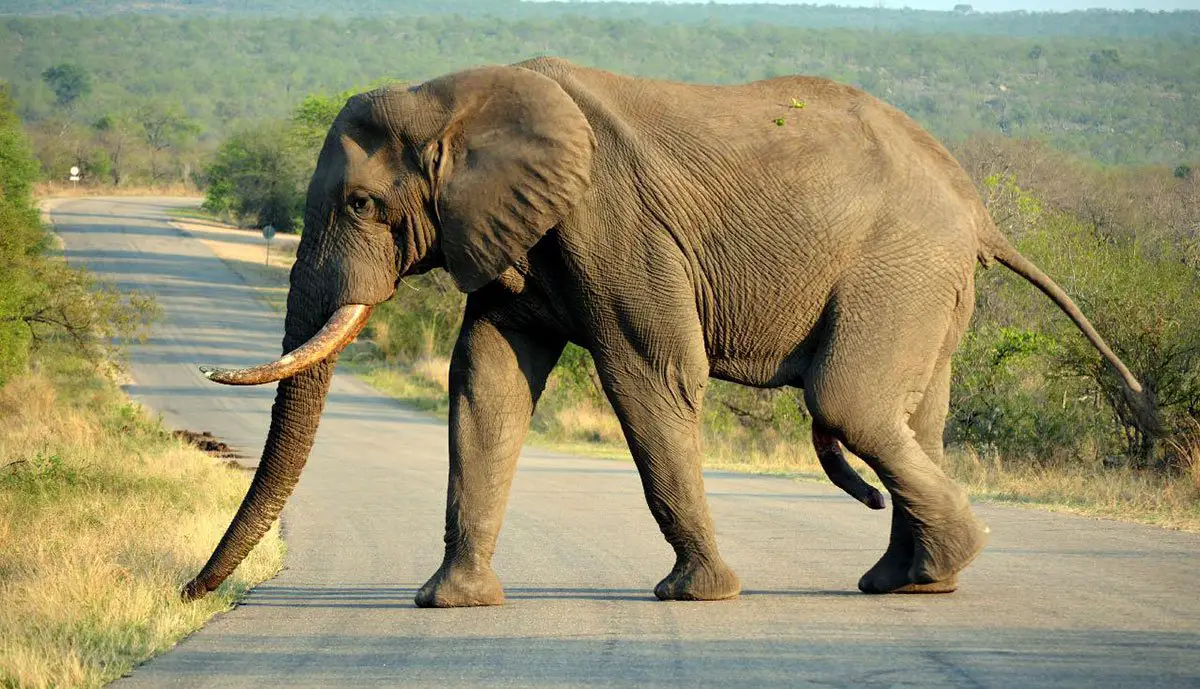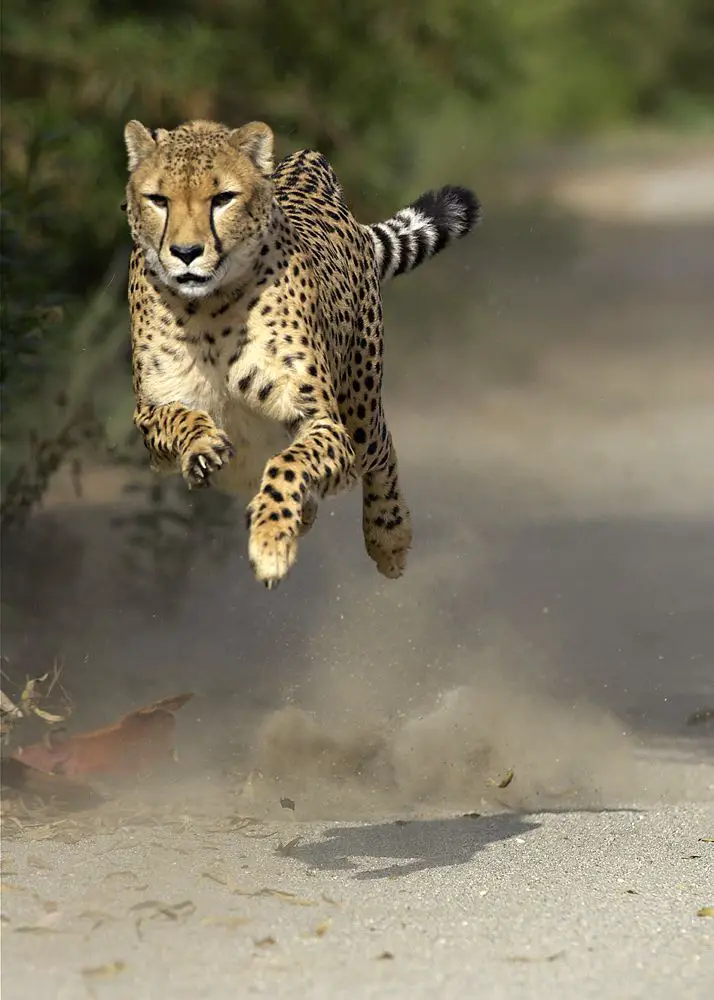The Asiatic cheetah (Acinonyx jubatus venaticus) is a rare subspecies that lives in the Arabian Peninsula and the Indian Subcontinent. It is also called Indian cheetah and Iranian cheetah. The cheetah is nearly extinct in the Indian Subcontinent.
The Indian Cheetah has light-colored coat and its belly is nearly all white.
The average body length is 112–135 cm (44–53 in) with the length of the tail measures about 66–84 cm (26–33 in).
Indian cheetahs weigh 34–54 kg (75–119 lb). Females are smaller than the males.
Like other subspecies, the Asiatic cheetah also loves to take on herbivorous mammals. The cheetah diet includes goitered gazelle, cape hare, chinkara, wild goat, and wild sheep.
Iranian cheetah likes to live in open habitats including small plains, semi-desert areas, and open lands.
The cheetah is fou nd in India, Pakistan eastern Iran (Dasht-e-Kavir) and in certain Wildlife Reserve parks. The overall population of Indian cheetahs is estimated at 42 individuals in the wild.
nd in India, Pakistan eastern Iran (Dasht-e-Kavir) and in certain Wildlife Reserve parks. The overall population of Indian cheetahs is estimated at 42 individuals in the wild.
During hunting or fast chase, cheetah produces 60 times the heat it produces during resting. That is why it takes a lot of time to settle down after killing its animal. However during this time some other predator is likely to take the prey from cheetah.
Female produces 1 to 4 cubs which are highly vulnerable during this stage. Cheetah’s predators such as hyenas, lions, wild dogs, and leopards likely kill cheetah cubs.
The International Union for the Conservation of Nature (IUCN) has listed Indian cheetah as a critically endangered species.





